Die Wolfsschanze (poln. Wilczy Szaniec) ist einer der meistbesuchten Orte in Masuren und ein einmaliges historisches Zeugnis. Hier, mitten im Wald, errichteten die Nazis eine kleine Bunkerstadt, von der aus sie den Krieg im Osten verwalteten. Ihr könnte die Anlage heute bequem erkunden und auch den Ort besuchen, an dem im Juli 1944 das berühmte Attentat auf Hitler verübt wurde. Der Telegraph hat die Wolfsschanze sogar zu einem der 25 interessantesten Orte in Osteuropa gewählt. Höchste Zeit also, dass wir euch die Wolfsschanze in unserem Blog einmal genauer vorstellen.
We will also take you on a trip to other Nazi facilities in Masuria. They may not be as well known, but they are also exciting destinations. By the way, we have compiled the most beautiful sights of Masuria in a separate article.
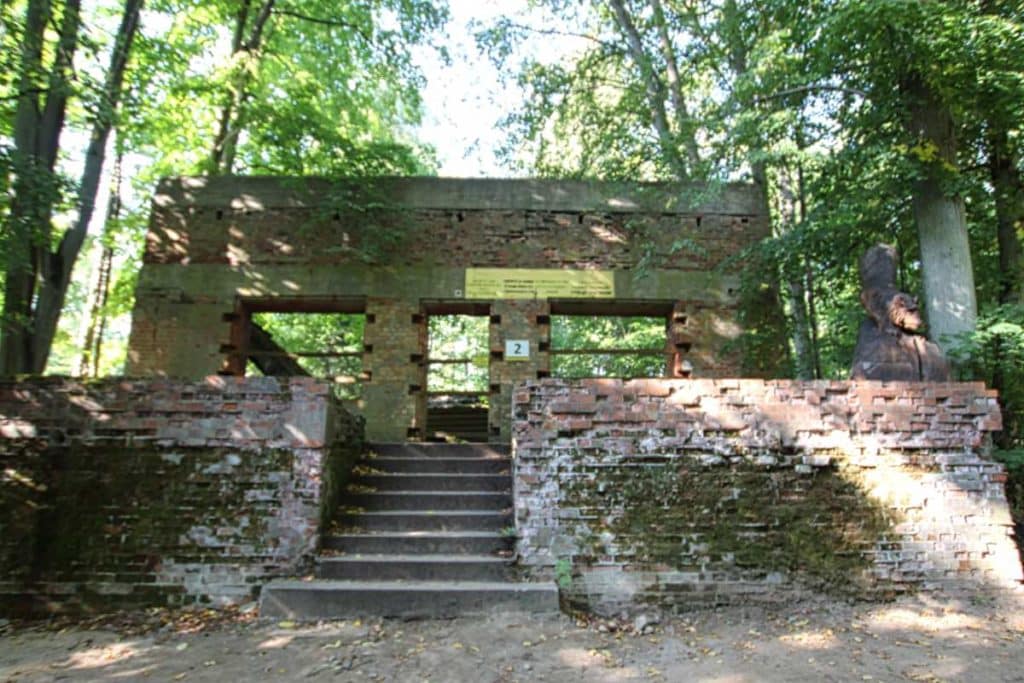
The Wolfs Lair (Wolfsschanze)
History of the Wolfsschanze
In June 1941, the long planned German invasion of the Soviet Union took place. Since the war on the Eastern Front initially took place far away from Berlin, it was decided to create a place where operations in the East could be planned in secret. As early as the fall of 1940, a group of high-ranking officers and the Nazi construction manager Fritz Todt set out into the dark Masurian forests to find a suitable location for a bunker city. The remoteness, a nearby airport (see Rastenburg Airport below) and the forests, which were difficult for enemy planes to see, were as if they had been made for the needs of the Nazi superiors. In addition, Berlin could be reached in only two hours by plane. Work began already in November 1940.
Some of the worst crimes in human history were planned from the Wolf’s Lair. This is also where the assassination attempt on Hitler took place on July 20, 1944, which has been world famous not only since the film “Valkyrie” starring Tom Cruise. Below, we describe exactly what happened back then. At the place where the meeting barrack stood, there is now an information board in German and Polish.
The end of the Wolfsschanze
After fate had turned on the Eastern Front and the Red Army was advancing ever further towards East Prussia, Hitler, who spent almost three years here, left the Wolfsschanze together with his staff on November 20, 1944. Two days later, under Field Marshal Keitel, the order was given to blow up the facility. However, the walls were so thick and massive that this was only partially successful. Fortunately, because this way one can still visit this historically unique place of horror, which became a ray of hope in these dark times due to the Hitler assassination attempt.
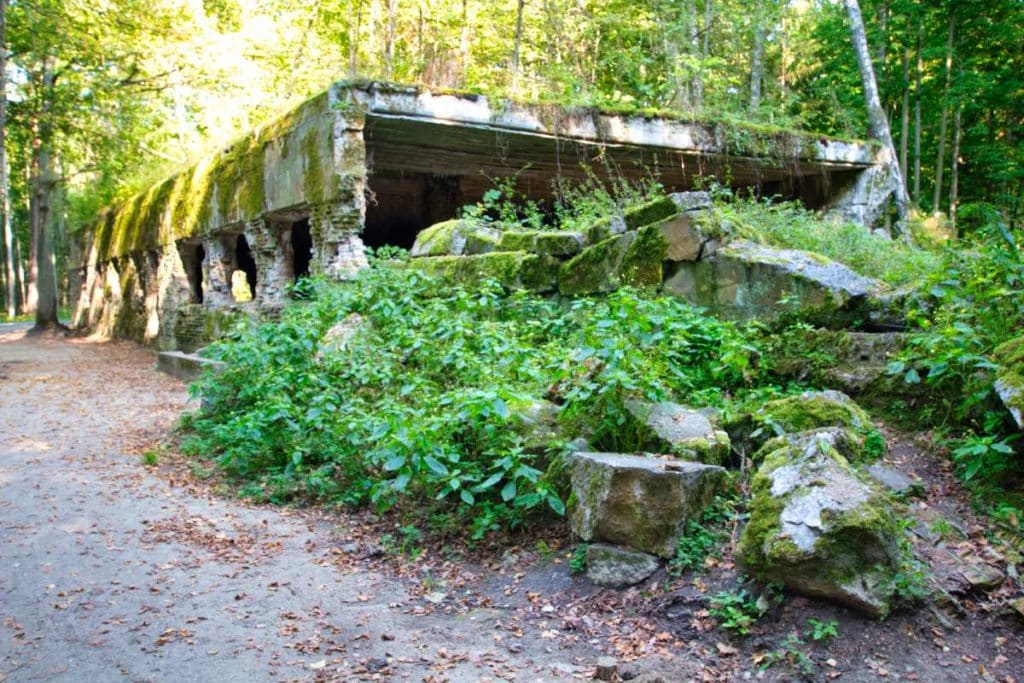
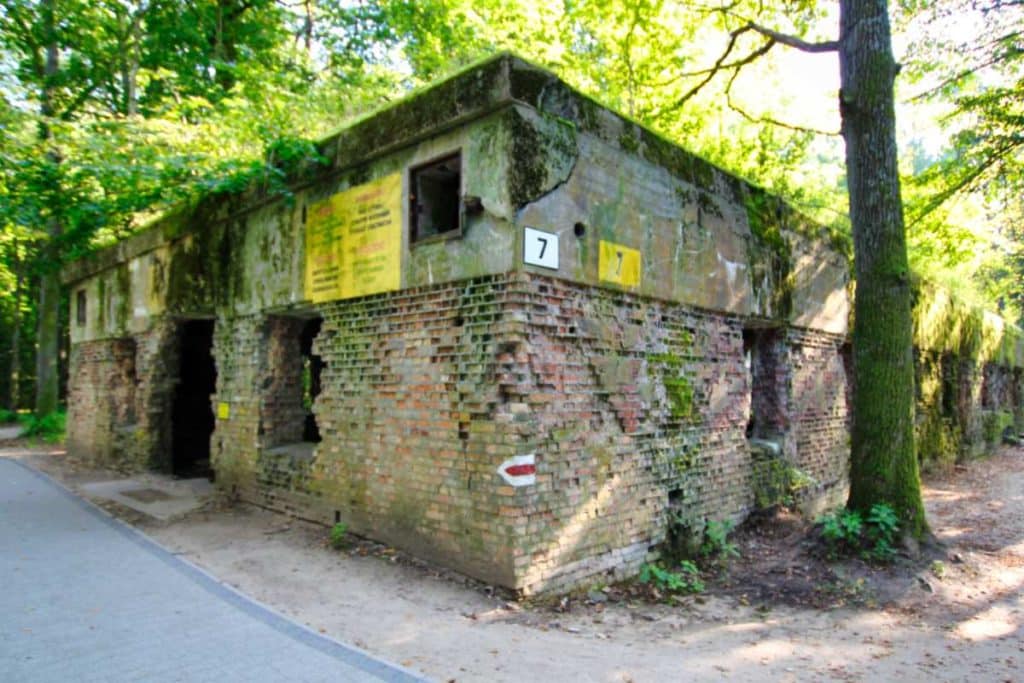
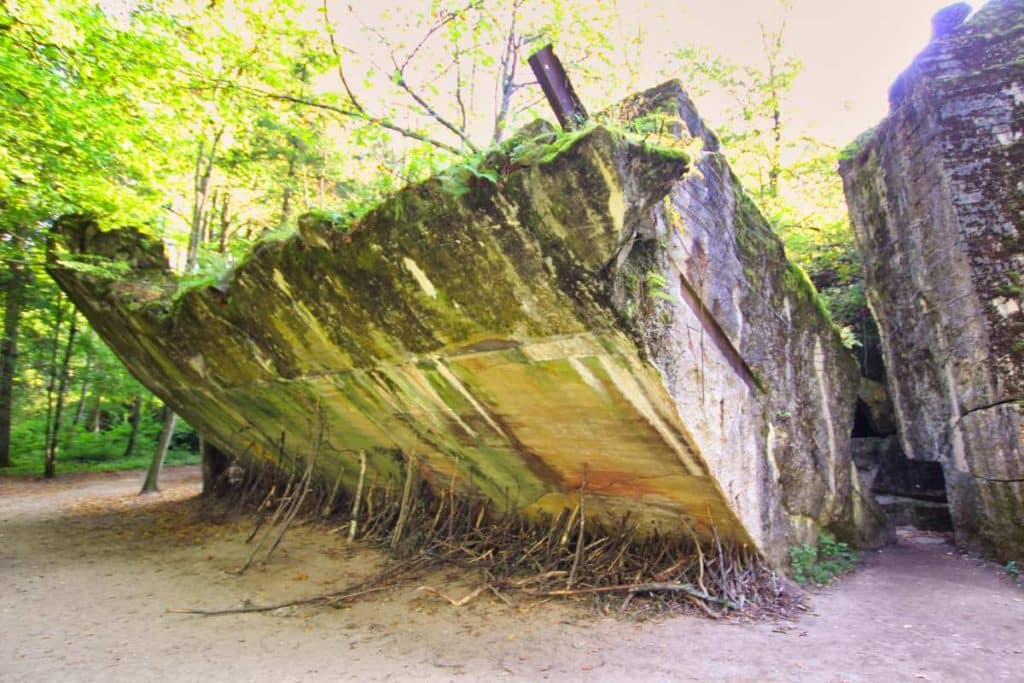
Structure of the Wolfsschanze and what can still be seen today
On an area of about 250 hectares, approximately 200 objects were constructed, including air-raid shelters, barracks and farm buildings. A small airport and even a railroad station were also built here. The complex was divided into three security zones, declared a restricted area and mined extensively. A separate sewerage system was built and in addition to hairdressers, a cinema, vegetable gardens and a swimming pool, many other buildings were constructed, making the Wolfsschanze a small secret town in the forest. The buildings were painted in camouflage colors and covered with nets and trees so that no allied airmen could see them.
A railroad line divided the area into a northern and a southern part. In the northern part, where the Visitor Center is located today, Hitler and his most important employees lived and worked. It was secured by barbed wire. South of the railroad line was the second restricted zone, where the most important representatives of the Wehrmacht lived. To the east of this zone, some smaller buildings were scattered relatively loosely, which were also used for military purposes. South of the complex was a mine belt.
A walk around the restricted zone
Today you can easily walk through the complex. Especially the Sperrkreis I (restricted zone I) is interesting, here are the most important buildings and all important places are explained. There is not much left, but the walls were so massive that they could not be blown up. Some of them look quite bizarre and seem to collapse at any moment. Therefore you have to be careful and should always stay on the given paths!
Besides the remains of the gigantic bunkers, there are also two small museums on the site. In one of them the life in the Wolfsschanze is described. Some everyday objects are exhibited here, for example empty beer bottles from the brewery in Rastenburg (Kętryzn). Besides that, the assassination attempt is also commemorated here. Another museum does not really fit in here thematically and reminds of the Warsaw uprising against the Germans, which began only about two weeks after the assassination and was bloodily suppressed. It is not so much the two museums that were recently established, but the bunker remains themselves that one should come here for. And even though there is not much to see anymore, you will be rewarded with unique photos here.
The Stauffenberg assassination attempt
The catastrophic development on the Eastern Front for Germany in 1944, which was disastrous for the Wehrmacht, and the Red Army’s advance westward as well as the horrors perpetrated in the name of Germany led to increasing resistance to Hitler within the Generalitat. This resistance was not, of course, voiced openly, but informal circles were formed to overthrow the dictator. But not only from the Wehrmacht, but also from the nobility and the Reich administration, a group was formed that made the bold plan to kill Hitler. Although there had been attacks on Hitler before, no assassination attempt had been as well planned and as foresightedly conceived as the attempted coup d’état around the reserve colonel Claus Schenk Graf von Stauffenberg.
Preparations
Together with other officers, several assassinations were carried out in advance, but all failed, often only at the last second. Stauffenberg was significantly involved in the planning of these assassinations without arousing suspicion. From the beginning of July on, he served as “Chief of Staff” of the Wehrmacht’s Reserve and Armaments Division and was therefore allowed to participate in situation meetings with Hitler. At the same time, elaborate plans were being forged as to how the growing group of conspirators could take over power in Berlin.
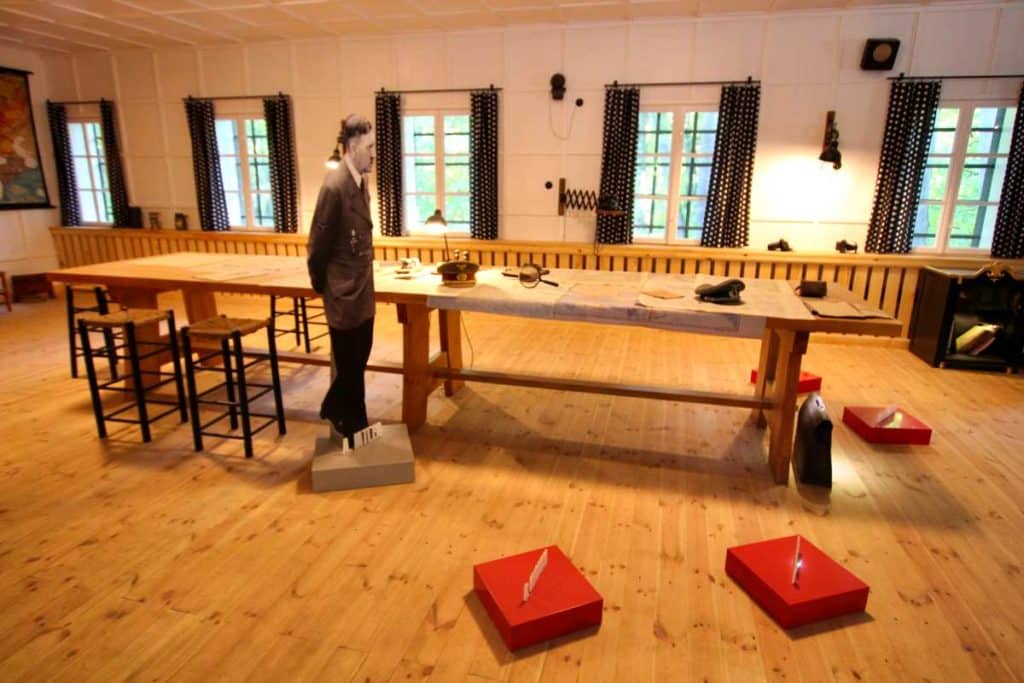
The assassination attempt on July 20, 1944
July 20, 1944 was to go down in history and took a dramatic course that none of the participants had foreseen. At about 8 o’clock in the morning, Graf von Stauffenberg and his adjutant Werner von Haeften flew from Berlin to Rastenburg Airport to attend a briefing in the Wolfsschanze. Stauffenberg knew that besides Hitler, other high-ranking Nazis and military personnel would be present and thought the time was right to carry out an assassination attempt here. Equipped with two bombs and a time fuse in his briefcase, Stauffenberg began his trip from the airport to the Führer’s headquarters at 10:15 a.m. and first took part in a conversation with Field Marshal Keitel.
Around 12.30 p.m. the situation meeting is called up. Stauffenberg gets under time pressure and can only arm one of the two bombs, which he quickly places under the meeting table, about 3 meters away from Hitler. After all participants had arrived, Stauffenberg fakes an urgent call and leaves the Wolfsschanze together with Haeften in a car. At 12:42 a.m. a detonation occurs, Stauffenberg passes the site relatively unhindered 3 minutes later and flies to Berlin.
What was not clear to him at that time was that the bomb missed its actual target because the briefcase was moved. In addition, due to the summer temperatures, the windows were opened, allowing the blast wave to escape. Hitler, of all people, was bent over the heavy oak table at the moment of the explosion to have plans explained to him, which further reduced the force of the explosion.
Operation Valkyrie
The co-conspirators now wanted to cut off the Wolf’s Lair from the outside world, but this did not succeed. During the flight back to Berlin, Stauffenberg assumed that the assassination attempt was successful. Now the Operation Valkyrie (Unternehmen Walküre) started. Originally a plan to suppress an uprising against those in power, Stauffenberg and his co-conspirators now wanted to use the plan to disempower the SS, SD, and NSDAP, and the military was to take control.
The consequences
However, due to an unfavorable concatenation of events, human error, indecision and technical problems, the plan was triggered too late or ignored by large parts of the army command. In the meantime, news reached Berlin that Hitler had survived. Stauffenberg’s plan had failed and he was arrested and sentenced to death like many others. But his courage and conscience showed that there were rays of hope even in the darkest hours of German history.
Your visit to the Wolfsschanze
The Wolfsschanze is easy to reach by car. The best place to start is the beautiful small town of Kętrzyn, which is also worth a visit. From here it is only about 10 to 15 minutes by car to the Wolfsschanze, which is well signposted on the way. The area is open all year round from 8 a.m. We recommend you to visit the Wolfsschanze already in the morning, because it can get very crowded later on, especially in summer. In winter the Wolfsschanze is only open until 4 pm, in summer even until 8 pm. You can find all information about the visit on the website of the Wolfsschanze.
The entrance fee is moderate with 15 zł, but you have to pay for the parking lot 25 zł. If you are travelling by motorhome, you can even stay overnight here. You can book a guided tour directly at the entrance, but it is quite expensive. Thanks to the Englisch, German, Polish and Russian signs, you can find your way around and explore the complex on several routes.
Other NS bunkers and military installations
Of course, the Wolf’s Lair is the destination par excellence for all those who travel in Mazury and are interested in (military) history. But also some other facilities have been preserved and offer you exciting discoveries, mostly even away from the tourist masses. All of them can be easily reached by car from the Wolfsschanze in a few minutes and offer exciting photo spots.



Mauerwald
From 1941 to 1944, Mauerwald (Polish: Mamerki) was the seat of the Army High Command and thus the central planning position for the war against the Soviet Union. Mauerwald is overshadowed by the Wolfs Lair, but in contrast to the former Führer Headquarters, the gigantic complex has a much better preserved building fabric.
The museum offers a somewhat strange mixture of dioramas with battles from the Second World War, a submarine that certainly did not sail through the Masurian Lake District, and a reconstructed Amber Room.
Directly next to the museum there is an observation tower. The steel stairs take you to dizzying heights high above the treetops. Why the tower stands here remains a mystery, because you can’t see anything of the bunkers up here. However, the idyllic view over the Masurian forests and lakes is nice too.


More exciting than the tower and the museum is the walk through the bunkers, which sometimes contain small exhibitions with miliaria, but sometimes are left to their own devices. When walking through the dark, humid corridors you should have a good cell phone or flashlight with you. The best thing is to take a picture of the plan at the museum with your smartphone to avoid getting lost in the huge area.


Hochwald
In the middle of the forest, about halfway between Węgorzewo and Giżycko, Heinrich Himmler had set up his quarters during the Second World War near the village of Pozezdrze about 20 km east of the Wolfsschanze. The bunker complex, which is only poorly signposted on the main road, is an interesting destination and far less well developed than the Wolfsschanze. Originally, there were still several barracks here. The area around Himmler’s 70-meter-long bunker was blown up by the Red Army, but is in good condition, so that today you can easily walk through the ruins with a flashlight.
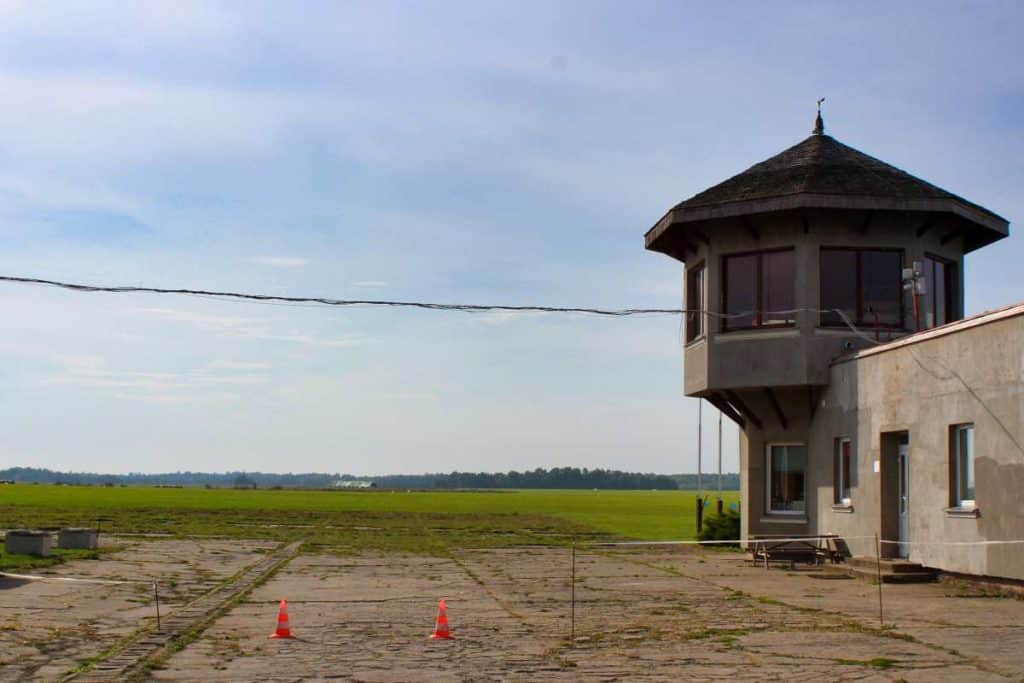
Rastenburg airfield
In the middle of the forest, well signposted but only accessible via a historic runway, lies the former secret airport Rastenburg. In the 1930s, a small sports airport was located here. When the Nazi leadership decided to build the Wolfsschanze, the existing airfield only 10 km away was the ideal location for the new airport. The airport developed into the central hub for the Nazi leaders, who could quickly travel from here to Berlin or to inspections on the Eastern Front. Hitler also used the airport five times for flights to today’s Ukraine.
The Wolfsschanze also had a small airfield, but with a runway of only 250 m length it was too small for the Heinkel, Junkers and Focke-Wulf airplanes, which could land on the airport Rastenburg with its two runways of 1200 and 900 m length.
The death of Fritz Todt
This is where Fritz Todt, after whom the NS construction group “Organisation Todt” was named and who was largely responsible for the NS Autobahn program, died in 1942. Actually Albert Speer, Hitler’s favorite architect, should also have been on the plane, but he had to cancel the flight for health reasons. According to another theory, Todt was on his way to Munich to attend a concert with his wife, but his own plane was being serviced and he had to fall back on the one of General Field Marshal Hugo Sperrle. After the successful take-off, the plane suddenly turned around and then exploded while still in the air. According to the official investigation report, the pilot Albert Hotz is said to have accidentally triggered the plane’s self-destruct mechanism.
Claus Schenk Graf von Stauffenberg also used the airport when he flew here from Berlin and started his return journey from here after the failed assassination attempt on Hitler. Towards the end of the war, the airport was used by the Red Army and later by the Polish army.
Today the airport is used by sports pilots, but you can also admire some military aircraft in a small museum and learn about the history of the airport and Polish pilots who fought on the British side during the war.
Do you know of any other interesting such areas? Write it down in the comments!

